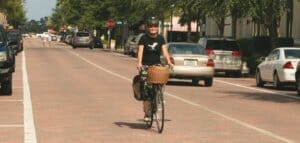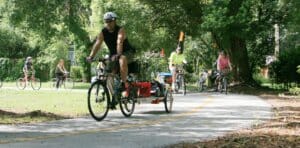INFRASTRUCTURE
Bicycle-specific infrastructure is valuable for both access and enjoyment, when designed properly and applied in an appropriate context.
Well-designed bicycle infrastructure is an asset to the community.
Most types of bicycle-specific infrastructure, including bike lanes and side paths, have contexts in which they work well, create access, increase comfort and benefit bicyclists. Unfortunately, some of these facilities can be very problematic when designed poorly or used in the wrong context.
Freeway-like road features can be navigated safely by educated bicyclists — we teach bicyclists these strategies. It is not possible to design edge facilities to safely guide uninformed bicyclists through such features. Freeway-like features should not be designed into surface streets that are used by bicyclists and pedestrians.
Poorly designed and implemented bicycle infrastructure creates confusion for bicyclists and motorists. It endangers the uninformed and hinders the informed.
It is our moral responsibility to teach people to recognize and deal with facilities that create confusion or conflicts. It is also our responsibility to speak out in an effort to prevent the installation of such facilities. If we don’t, who will?




